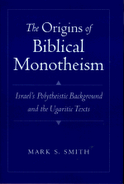What is the "scientific method''?The scientific method is the best way yet discovered for winnowing the truth from lies and delusion. The simple version looks something like this:
When consistency is obtained the hypothesis becomes a theory and provides a coherent set of propositions which explain a class of phenomena. A theory is then a framework within which observations are explained and predictions are made. The great advantage of the scientific method is that it is unprejudiced: one does not have to believe a given researcher, one can redo the experiment and determine whether his/her results are true or false. The conclusions will hold irrespective of the state of mind, or the religious persuasion, or the state of consciousness of the investigator and/or the subject of the investigation. Faith, defined as belief that does not rest on logical proof or material evidence, does not determine whether a scientific theory is adopted or discarded. A theory is accepted not based on the prestige or convincing powers of the proponent, but on the results obtained through observations and/or experiments which anyone can reproduce: the results obtained using the scientific method are repeatable. In fact, most experiments and observations are repeated many times (certain experiments are not repeated independently but are repeated as parts of other experiments). If the original claims are not verified the origin of such discrepancies is hunted down and exhaustively studied. When studying the cosmos we cannot perform experiments; all information is obtained from observations and measurements. Theories are then devised by extracting some regularity in the observations and coding this into physical laws. There is a very important characteristic of a scientific theory or hypothesis which differentiates it from, for example, an act of faith: a theory must be ``falsifiable''. This means that there must be some experiment or possible discovery that could prove the theory untrue. For example, Einstein's theory of Relativity made predictions about the results of experiments. These experiments could have produced results that contradicted Einstein, so the theory was (and still is) falsifiable. In contrast, the theory that ``the moon is populated by little green men who can read our minds and will hide whenever anyone on Earth looks for them, and will flee into deep space whenever a spacecraft comes near'' is not falsifiable: these green men are designed so that no one can ever see them. On the other hand, the theory that there are no little green men on the moon is scientific: you can disprove it by catching one. Similar arguments apply to abominable snow-persons, UFOs and the Loch Ness Monster(s?). A frequent criticism made of the scientific method is that it cannot accommodate anything that has not been proved. The argument then points out that many things thought to be impossible in the past are now everyday realities. This criticism is based on a misinterpretation of the scientific method. When a hypothesis passes the test it is adopted as a theory it correctly explains a range of phenomena it can, at any time, be falsified by new experimental evidence. When exploring a new set or phenomena scientists do use existing theories but, since this is a new area of investigation, it is always kept in mind that the old theories might fail to explain the new experiments and observations. In this case new hypotheses are devised and tested until a new theory emerges. There are many types of ``pseudo-scientific'' theories which wrap themselves in a mantle of apparent experimental evidence but that, when examined closely, are nothing but statements of faith. The argument , cited by some creationists, that science is just another kind of faith is a philosophic stance which ignores the trans-cultural nature of science. Science's theory of gravity explains why both creationists and scientists don't float off the earth. All you have to do is jump to verify this theory - no leap of faith required. |
Monday, July 28, 2008
What is the ``scientific method''?
Subscribe to:
Post Comments (Atom)





0 comments:
Post a Comment